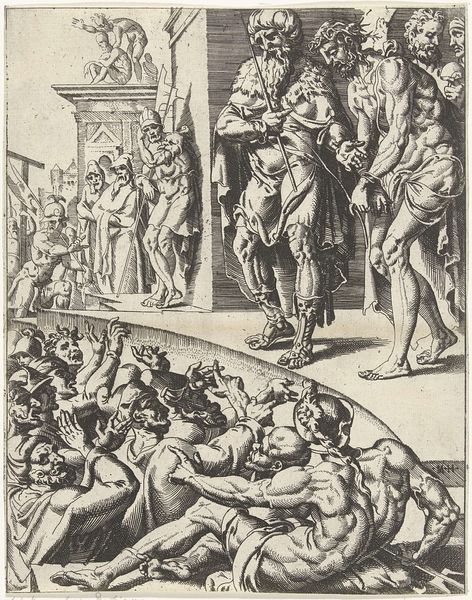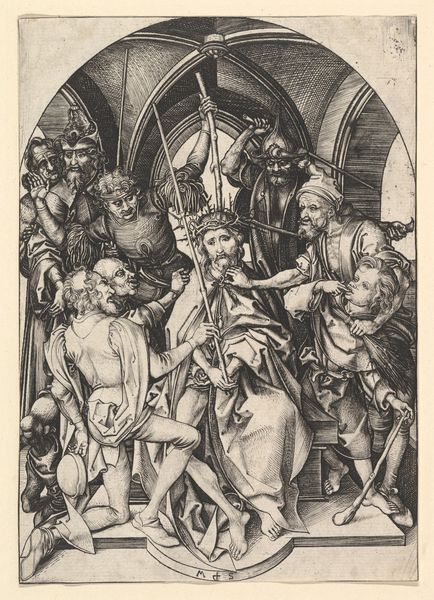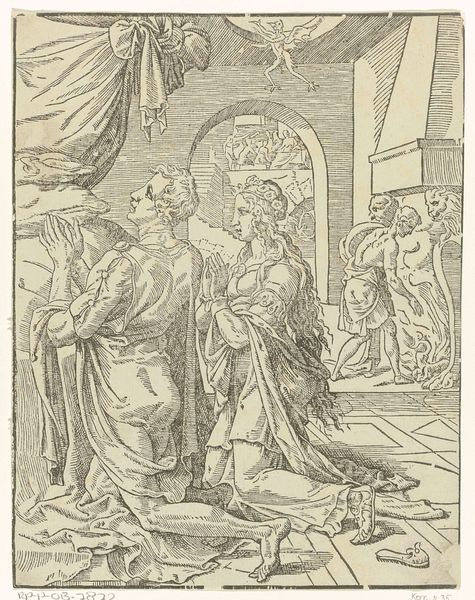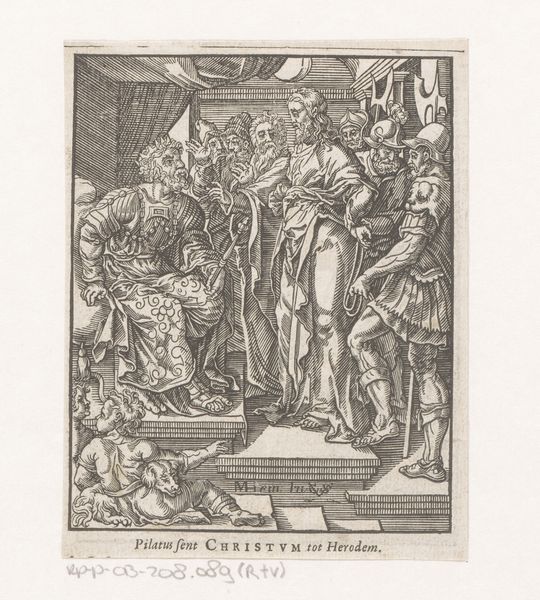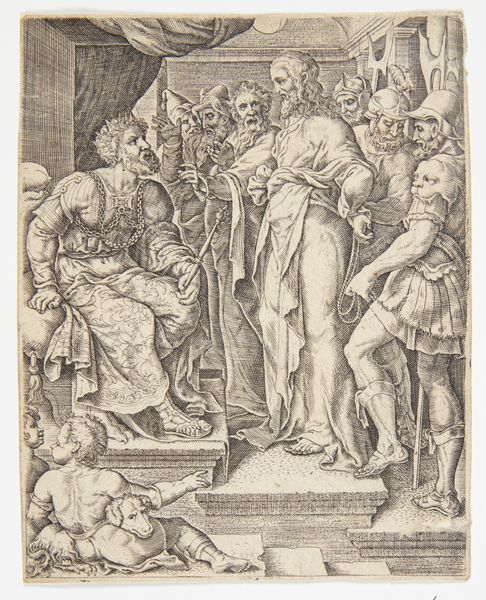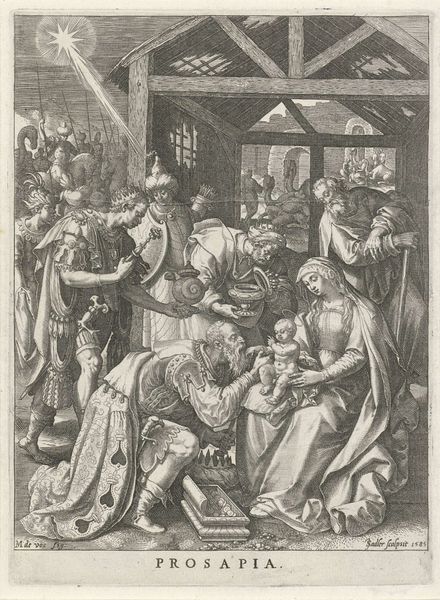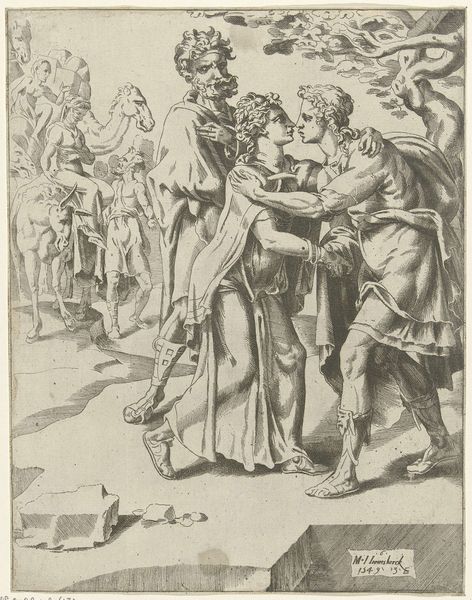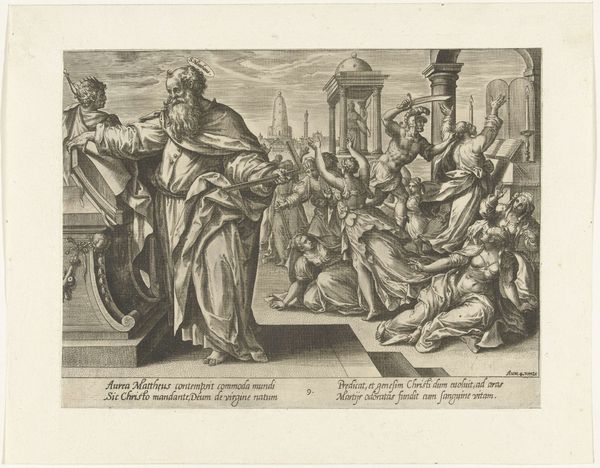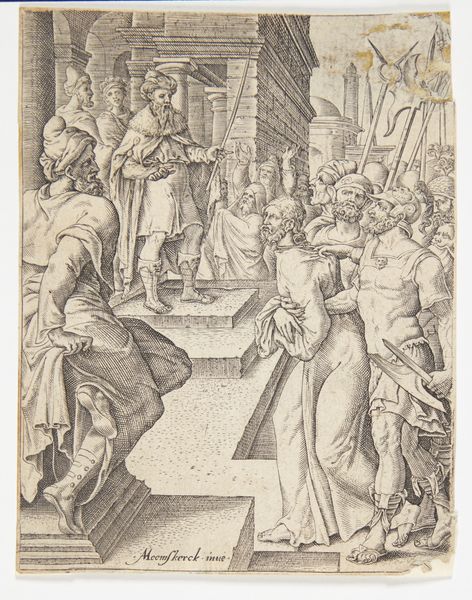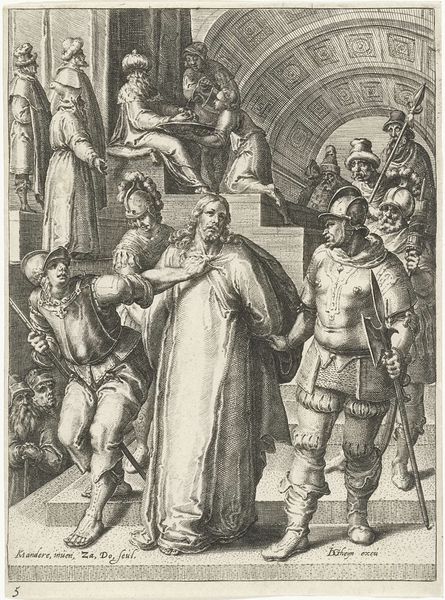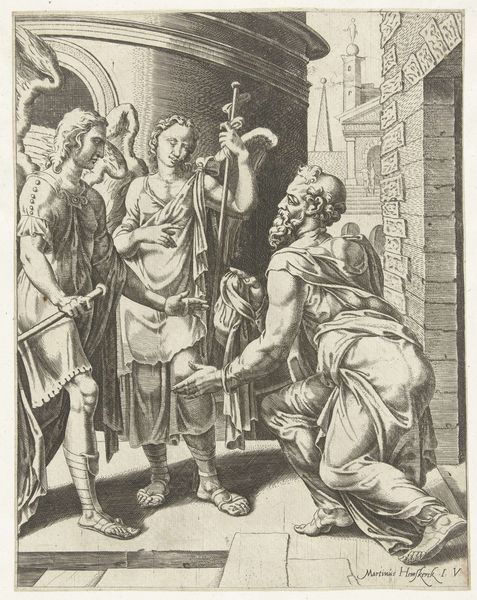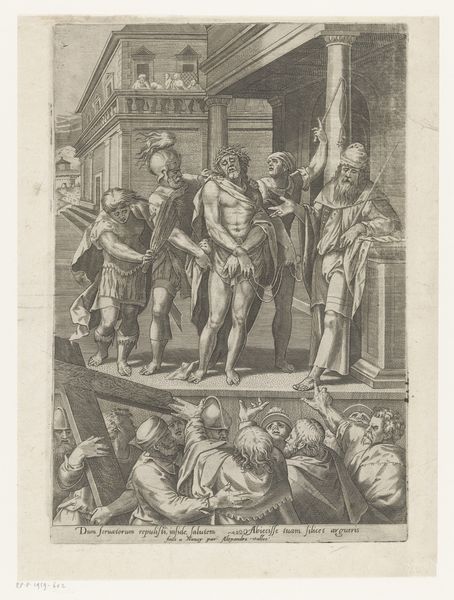
print, engraving
# print
#
mannerism
#
figuration
#
line
#
history-painting
#
engraving
Dimensions: height 255 mm, width 205 mm
Copyright: Rijks Museum: Open Domain
Editor: So, this is "Two Angels Lead Lot into the House," an engraving by Cornelis Bos from around 1551. I find the image quite arresting - all those figures crammed together! What kind of story is being told through this composition? Curator: It depicts a scene from the Book of Genesis, Lot escaping Sodom. Look how the angels actively pull him away from the mob. But consider why *this* moment? Why not the destruction itself? The artist has chosen a moment of resistance, perhaps speaking to the inner turmoil and societal pressures faced by individuals during times of upheaval. Editor: So, you see the crowding not just as a visual technique, but as symbolic of social pressures? I was thinking it's more about the style of Mannerism. Curator: Precisely! Mannerism often employs distorted perspectives and exaggerated forms to convey emotional intensity. But within that style, the *choice* of imagery becomes critical. The threatening figures—what do they evoke? Do they resemble anything from Bos’s time? Are they purely fantastical or are they reflections of societal anxieties from the mid-16th century? Editor: It's interesting how you point out the choice of scene. It almost feels like Bos is focusing on the psychological struggle more than the divine act itself. Curator: Exactly. The compressed space emphasizes Lot's entrapment, both physical and moral. The angels aren't just saving him, they are extracting him from a corrupted society. Do you notice how Lot averts his gaze? Editor: I do now! It's as if he doesn't want to look back. A kind of reluctance maybe? Curator: Possibly. Or perhaps an understanding that to look back would be to return, metaphorically, to the corruption he is fleeing. Symbolically, he is turning away from a life of sin. Editor: Wow, that adds a whole new layer to how I see the work. It's less a history painting, more a moral reflection. Curator: Indeed. It’s a potent reminder of the psychological weight imagery carries and the way artists utilize symbols to explore universal human experiences across time.
Comments
No comments
Be the first to comment and join the conversation on the ultimate creative platform.
